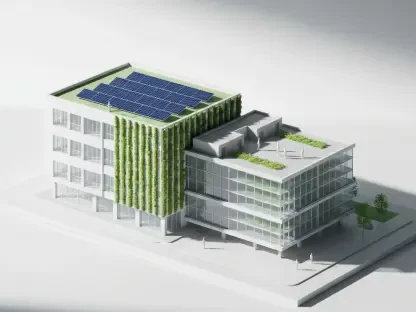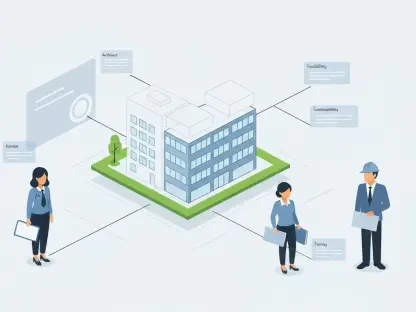As the world seeks more eco-friendly construction solutions, the global geopolymer concrete market is gaining significant momentum, marked by striking growth projections. Anticipated to grow from USD 8.01 billion in the current year to USD 15.18 billion by 2030, this market is driven by a compound annual growth rate (CAGR) of 11.30%, underscoring its potential. The rising interest in geopolymer concrete primarily stems from the need to reduce carbon emissions and enhance sustainability in the construction sector, presenting a compelling alternative to traditional Portland cement. This shift is spurred by rapid construction activities in emerging economies and an increased focus on environmentally conscious building processes.
Market Drivers and Influencing Factors
Rising Demand for Eco-Friendly Alternatives
Geopolymer concrete, with its minimal carbon emissions, addresses pressing environmental concerns. Its ability to withstand chemical exposure without compromising durability distinguishes it as a superior choice over Portland cement. The worldwide demand for infrastructure, particularly in transportation and energy sectors, further propels the need for durable, sustainable construction materials. Regions experiencing economic growth are keen to adopt materials that align with global climate goals, promoting the wider use of geopolymer alternatives. This boom in demand aligns with stricter regulations on emissions, encouraging more construction companies to turn towards sustainable options.
Technological advancements continue to bolster the practical applications of geopolymer concrete. Innovations in binder compositions and curing techniques contribute to enhanced quality and reliability of output. Automation and 3D printing technologies, which make for more efficient production processes, further facilitate the material’s commercial adoption. These advancements not only improve operational efficiencies but also reduce costs, making geopolymer concrete an attractive option for large-scale projects. Moreover, the increased availability of industrial byproducts like fly ash has made production more feasible and cost-effective, reducing dependency on traditional raw materials.
Economic and Global Influences
Although the future looks promising, the journey to widespread adoption of geopolymer concrete faces hurdles. A primary challenge lies in technical awareness, as many industries still lack comprehensive guidelines to confidently integrate this innovative material. Moreover, the initial costs of geopolymer concrete can be higher compared to conventional materials, deterring some stakeholders. Another concern is the dependency on the regional availability of byproducts like fly ash and slag, which can lead to supply chain disruptions. These byproducts are utilized extensively for producing geopolymer mixtures, and any scarcity can affect production volumes, ultimately impacting market prices and project timelines.
Despite these challenges, companies have been proactive in seeking strategic partnerships and embarking on pilot projects to diversify product offerings. These efforts include developing specific solutions tailored for applications in precast structures and marine environments, showcasing the material’s versatility. Collaborative research initiatives aim to overcome the knowledge gap and drive innovation, which will assist in lowering production costs and establishing standardized practices. As the industry continues to evolve, supportive policies from governments and international bodies are expected to bolster the adoption of geopolymers.
Future Prospects and Industry Trends
Strategic Industry Initiatives
To overcome the existing challenges, key players in the market are investing heavily in research and development. These investments aim to create partnerships that can bridge knowledge gaps and improve geopolymer concrete applications. Strategic moves include developing bespoke solutions for specific construction environments, such as marine and precast structures, demonstrating this material’s adaptability. This level of customization presents an opportunity for businesses to enhance their market positioning by addressing niche demands. Additionally, government incentives and new regulations supporting sustainable development practices are expected to provide a conducive landscape for further adoption.
The potential of geopolymer concrete is closely linked with broader industry trends emphasizing sustainability and circular economy initiatives. The future of construction materials hinges not just on reduced environmental impact but also on the ability to recycle and reuse, aligning with circular economy principles. As the construction industry inclines toward sustainable alternatives, geopolymer concrete is likely to see increased adoption. Ongoing collaborations among industry stakeholders, academia, and policymakers are crucial to facilitate further innovation and standardization in manufacturing processes. These developments will be essential in achieving climate goals and promoting a greener construction sector.
Aligning with Green Goals
As the global demand for sustainable building materials intensifies, the geopolymer concrete market is experiencing impressive growth and expanding influence. Forecasts predict that this market will climb from USD 8.01 billion this year to USD 15.18 billion by 2030, driven by a robust compound annual growth rate (CAGR) of 11.30%. The increasing interest in geopolymer concrete is fueled by a concerted effort to decrease carbon emissions and prioritize sustainability within the construction industry, offering an appealing alternative to conventional Portland cement. This paradigm shift is partly due to the accelerated construction activities in emerging economies, where infrastructure development is in high demand. Additionally, there is a growing emphasis on environmentally responsible building practices, further propelling the adoption of geopolymer concrete. As a result, this market exemplifies the intersection between economic growth and ecological mindfulness, promising a more sustainable future for global construction.









